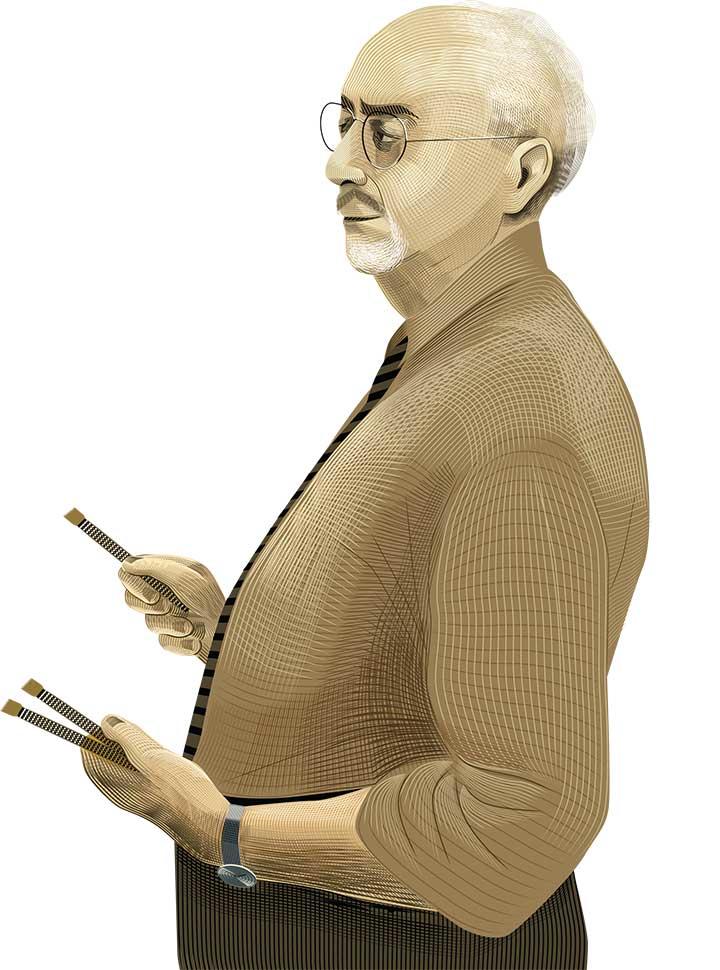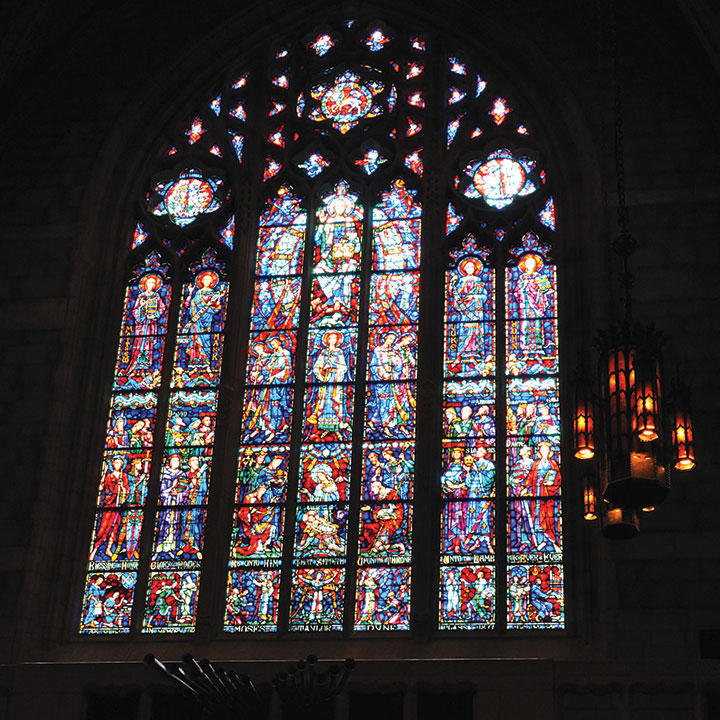Virtually every Princetonian goes through the main doors of the University Chapel for Opening Exercises. The pomp and circumstance of entering the Chapel, however, might distract many a fresh-faced student from appreciating one of the campus’s great works of art: the massive stained-glass window over that entrance. (See below.) It’s called “The Second Coming of Christ,” and it’s the work of Nicola D’Ascenzo.
D’Ascenzo was one of many Italian craftsmen who helped build the University, including stonemasons and landscapers. He was born in Italy and came to the United States in 1882 when he was 11 years old. D’Ascenzo became a stonecutter and woodworker’s apprentice and took formal painting lessons in the evenings before beginning a career as a decorator, later becoming interested in stained glass. He completed his first stained-glass commission in 1904, and by the time he died 50 years later, his studio was known for producing some of the finest stained-glass works in the country. He designed more than 7,800 windows for places including the National Cathedral and the Folger Shakespeare Library.
At the center of the Chapel window, D’Ascenzo portrayed the first coming of Christ — the nativity scene. That scene is flanked on the left and right by figures depicted as being present at the second coming of Christ. At the top of the window, an image of Christ is surrounded by the zodiac signs, meant to symbolize that he understands all time.
“Stained-glass work today is still a craft,” D’Ascenzo told The Daily Princetonian in 1930 after he had completed work on his Chapel window, “and in many respects is as primitive as it was 700 years ago.”
D’Ascenzo’s studio in Philadelphia used little machinery for its stained-glass works of art, opting to work by hand instead. In the Chapel’s “The Second Coming of Christ,” D’Ascenzo employed a mosaic style and a glassmaking technique that dates back to the 12th century.
“Many small bits of glass have been placed together to give brilliant contrasts of color,” he told the Prince. “After the glass has been blown and the color fused into it, it is rolled out into large sheets about two feet by three. Then it is cut according to a pattern, all the work being done by hand.”
The stained-glass window is more than 700 square feet and was assembled at D’Ascenzo’s studio before the artist transported large sections to Princeton for its installation on the entrance on the west side of the Chapel, facing East Pyne.
D’Ascenzo’s work is one of four large windows in the main sanctuary; in total the Chapel has 27 stained-glass windows by different artists, adding up to about 10,000 square feet of art.
The Chapel’s stained-glass windows celebrate four major themes: endurance, teaching, love, and the second coming of Christ. Amid the religious iconography, D’Ascenzo gave a nod to the Chapel’s construction by including images of the architect, the organist, and the glassmaker himself.













1 Response
Stephen Dittmann k’35
5 Years AgoRowan LeCompte’s Poets
Your portrait about stained glass in the Chapel (Princeton Portrait, Jan. 8) could be supplemented by the gift of the late Hugh Trumbull Adams ’35 of a window in right rear featuring famous poets, by the late Rowan LeCompte of Virginia.
Like Nicola D’Ascenzo, the subject of the article, LeCompte designed several windows at National Cathedral, sponsored by Adams. The two tigers outside of Whig and Clio also were donated by Adams, in 1969.